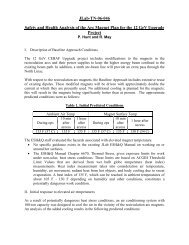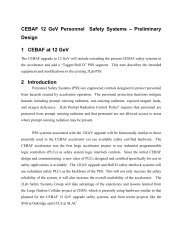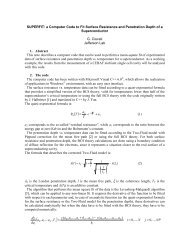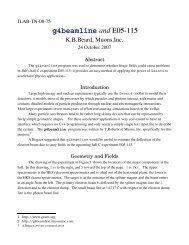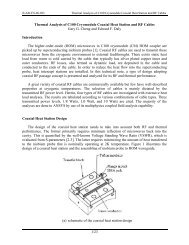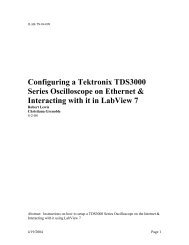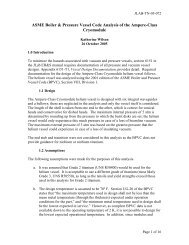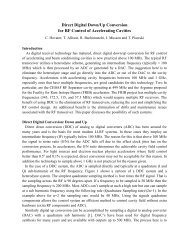Workshop on Polarized Electron Sources and Polarimeters
Workshop on Polarized Electron Sources and Polarimeters
Workshop on Polarized Electron Sources and Polarimeters
Create successful ePaper yourself
Turn your PDF publications into a flip-book with our unique Google optimized e-Paper software.
total exposure as high as 5800 L. Within some uncertainties, no degradati<strong>on</strong> of the QE<br />
was observed. Photocathodes from the MOCVD group showed a different evoluti<strong>on</strong> of<br />
the quantum efficiency. With these photocathodes higher initial QE of about 25 - 30%<br />
were routinely obtained. Moreover, the first AH cleaning typically resulted in an<br />
increase of the QE with an obtained highest value of 35 %. However, further AH<br />
cleanings (21 with total exposure of 5100 L for the sample with l<strong>on</strong>gest history) <strong>and</strong><br />
reactivati<strong>on</strong>s of these photocathodes lead to a slow, steady decay of the QE with a<br />
saturati<strong>on</strong> value at about 15 %. We varied hydrogen exposures within 100 - 440 L but<br />
did not see str<strong>on</strong>g improvements. The refreshing of the surface with HCL treatment<br />
inside glove box did not rise QE value proving that the surface cleanness is not<br />
resp<strong>on</strong>sible for the steady QE degradati<strong>on</strong> al<strong>on</strong>g with the number of AH treatments.<br />
The possible reas<strong>on</strong> of the degradati<strong>on</strong> is believed to be due the inserti<strong>on</strong> of a<br />
dislocati<strong>on</strong> network inside the semic<strong>on</strong>ductor structure during multiple heat-cleaning<br />
cycles of up to 450 0 C. Indeed, transmissi<strong>on</strong> – mode GaAs photocathodes <strong>on</strong> glass or<br />
sapphire substrates are mechanically strained <strong>and</strong> potentially have a risk to develop a<br />
dislocati<strong>on</strong> net al<strong>on</strong>g with heat-treatment cycles even at moderate temperature<br />
treatment due to the different thermal expansi<strong>on</strong> coefficients of the semic<strong>on</strong>ductor<br />
heterostructure <strong>and</strong> the sapphire base plate. Study of the surface morphology of<br />
degraded photocathodes with an atomic force microscope indeed revealed the<br />
existence of a mesh – like structure resulting from the dislocati<strong>on</strong> network which is<br />
inserted into the heterostructure during multiple high temperature treatments under the<br />
influence of mechanical strain. More studies are needed to minimize the dislocati<strong>on</strong><br />
density in strained photocathodes.<br />
TSR ELECTRON TARGET PERFORMANCE<br />
Using the cryogenic photocathode source, ultra cold electr<strong>on</strong> beams were obtained,<br />
with transverse <strong>and</strong> l<strong>on</strong>gitudinal temperatures of



